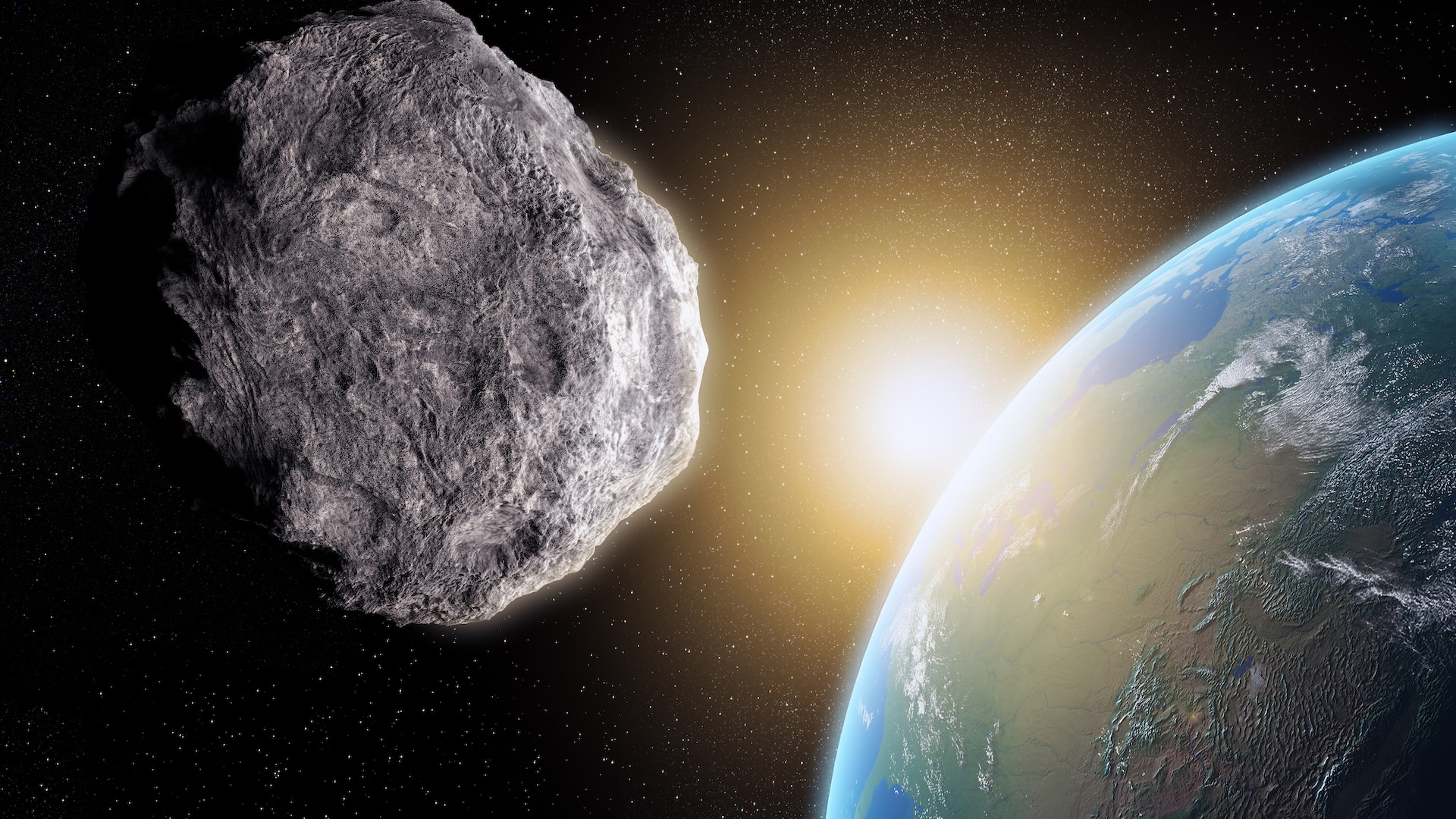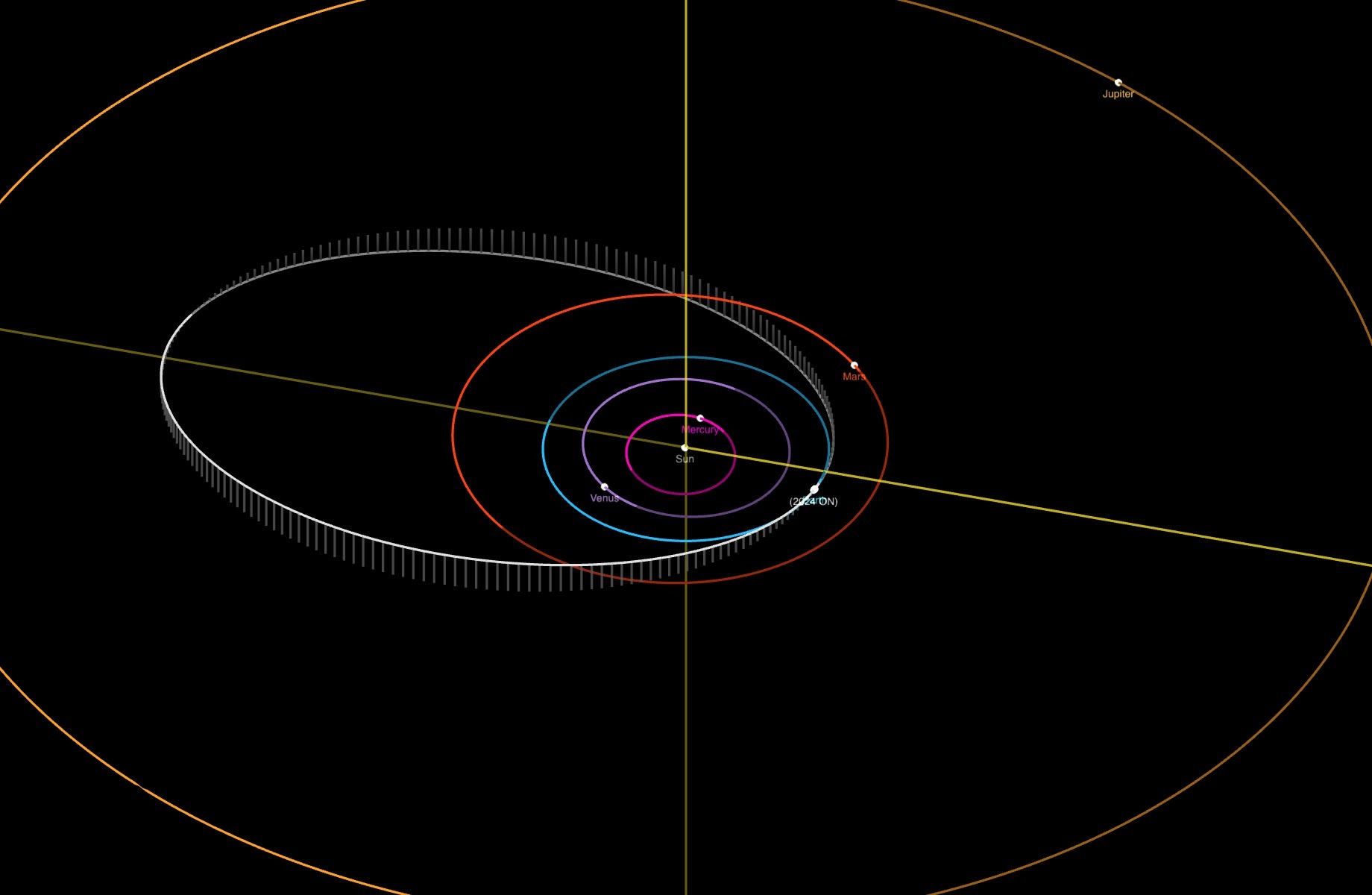'Potentially hazardous' asteroid the size of a skyscraper to skim past Earth on Tuesday
The gigantic asteroid 2024 ON, about the size of a skyscraper, will fly close to Earth next Tuesday, missing our planet by 2.6 times the distance between Earth and the moon.

A "potentially hazardous" asteroid the size of a skyscraper is set to zip past Earth on Tuesday (Sept. 17), according to NASA.
The skyscraper-size asteroid, named 2024 ON, has an estimated diameter between 721 and 1,575 feet (220 to 480 meters), and will zip past the Earth at 19,842 mph (31933 km/h) — or around 26 times the speed of sound.
At its closest approach, the asteroid will come within about 0.62 million miles (1 million kilometers) of Earth, around 2.6 times the average distance between Earth and the moon. By cosmic standards, this is an incredibly tight margin — but still far enough away that no Earthlings need worry about the passing space rock.
NASA deems any space object that comes within 120 million miles (193 million km) of Earth a "near-Earth object" and classifies any large object within 4.65 million miles (7.5 million km) of our planet as "potentially hazardous." NASA tracks the locations and orbits of roughly 28,000 asteroids, following them with the Asteroid Terrestrial-impact Last Alert System (ATLAS), an array of four telescopes that perform a scan of the entire night sky every 24 hours.
NASA has estimated the trajectories of all these near-Earth objects beyond the end of the century. Earth faces no known danger from an apocalyptic asteroid collision for at least the next 100 years, according to NASA.
Related: Why are asteroids and comets such weird shapes?
If 2024 ON were to hit Earth, it would not cause a cataclysmic event like the 7.5-mile-wide (12 km) dinosaur-killing asteroid that struck Earth 66 million years ago. But this doesn't mean its effects wouldn't be far-reaching. For example, a 2013 explosion of a 59-foot-wide (18 m) meteor above Chelyabinsk, Russia, generated a blast roughly equal to around 400 to 500 kilotons of TNT, or 26 to 33 times the energy released by the Hiroshima bomb, and injured around 1,500 people.
Sign up for the Live Science daily newsletter now
Get the world’s most fascinating discoveries delivered straight to your inbox.

Understanding the trajectories of asteroids can be a harder task than it first appears because of the so-called Yarkovsky effect. Named after the 19th-century engineer who first proposed it, the effect means that, over long periods of time, space rocks absorb and emit enough momentum-carrying light to subtly change their orbits. This means that quantifying the Yarkovsky effect is crucial when predicting which asteroids are potential threats.
Space agencies around the world are already working on possible ways to deflect a dangerous asteroid if one ever headed our way. On Sept. 26, 2022, the Double Asteroid Redirection Test (DART) spacecraft redirected the non-hazardous asteroid Dimorphos by ramming it off course, altering the asteroid's orbit by 32 minutes in the first test of Earth's planetary defense system. NASA has since hailed the mission as a success beyond all expectations.
China has also said it is in the early planning stages of an asteroid-redirect mission. By slamming 23 Long March 5 rockets into the asteroid Bennu, which will swing within 4.6 million miles (7.4 million km) of Earth's orbit between the years 2175 and 2199, scientists hope to divert the space rock even further from its current trajectory..
For those interested in following the course of 2024 ON as it skims past our planet, the Virtual Telescope Project will show a live feed of its path beginning on Sept. 15 at 19:30 UTC, when the object will be visible in the Northern Hemisphere.

Ben Turner is a U.K. based staff writer at Live Science. He covers physics and astronomy, among other topics like tech and climate change. He graduated from University College London with a degree in particle physics before training as a journalist. When he's not writing, Ben enjoys reading literature, playing the guitar and embarrassing himself with chess.










